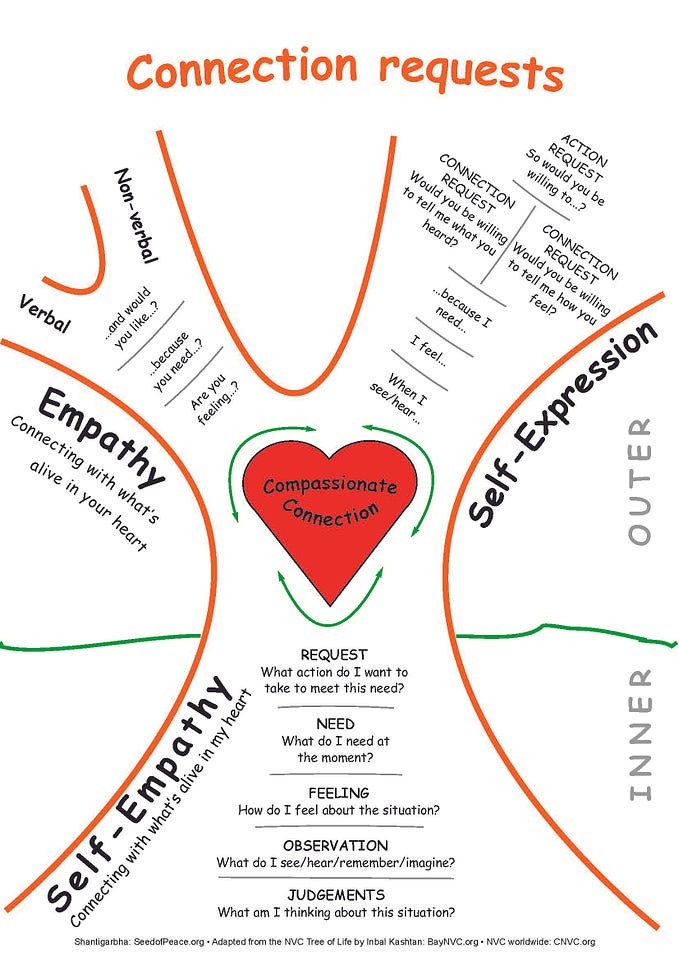Security Tokens and The Investment Stage

You might not know it yet, but security tokens are having a strong year.
According to a recent PwC report, companies last year (2018) raised $442M from security token offerings, up from just $22M the year prior (2017) — a 20x jump.
Even more striking is the number of already-announced tokenization projects in 2019, a list that includes heavyweights like Facebook and Overstock. At the year’s halfway mark, security token deals are likely an order of magnitude greater than the last two years combined.
More on this in a minute.
For background, a security token is a digitized asset (e.g. stock), classed as a security under the laws of a governing jurisdiction (e.g. United States), issued, tracked, and traded using blockchain — a type of shared accounting database. Last year I wrote Security Tokens and the Digital Wrapper, a piece that spoke to the unique features of security tokens in the context of another technological advancement: the digitization of mail in the United States.

One year later, it’s more clear to me that the intersection between blockchains and our global pool of assets is inevitable. What digitization did for mail, it will also do for all the world’s value — regardless of kind or type. A new programmable format for assets (digitization), paired with a new model for how assets can be tracked and owned (trustless ledgers), will provide transformative value in both our public and private markets.
For those studying the space, it seems the question is no longer if — but when?
Historically Transformative Innovations
In a research report released last month by Brett Winton, Director of Research at ARK Invest, Winton wrote that economic historians tend to find transformative innovations (think steam engines, electricity, the internet) fascinating to study, because their macroeconomic effects tend to be quite puzzling. Instead of adding to economic momentum in their earliest years, disruptive technologies seemed to impede growth.
Let’s take electricity for example.

Winton’s research showed that while electrification caused an improvement in productivity across the manufacturing industry in the 1920s, it actually placed a drag on the economy for more than a decade prior. To leverage the new productivity benefits offered by electricity, manufacturing sub-sectors had to first sunset existing technologies, and invest (at a low-yield) until electrification finally reached critical mass.
Sound familiar?
Before we get to blockchain and security tokens, let’s walk through another historically transformative innovation — the internet. Winton’s research might help color what we know about internet-based venture over the last few decades. Here, industry-specific disruptors have been trained to prioritize user growth at the expense of short-term profitability, largely as a response to historical analogues.
Uber, which has all but demolished the taxi industry, continues to burn cash. Airbnb sprinted for nine years before posting its first annual profit. Amazon, which redefined global retail, spent much of its early history losing money. We know that travel, hospitality, and retail have been forever changed by the internet — but reviewing the early economics of each industry’s investment stage might paint a slightly different picture.
Clearly then, transformative innovation does not necessitate immediate profits. And that can look pretty scary for industry pioneers, especially as cash burns and adoption remains low during those first years. During the investment stage, it’s easy to highlight the shortcomings of new applications built on top of disruptive technology.
But make no mistake — once an investment stage rounds out in the right places, economic growth can be realized with an impact that’s massively felt across an industry.
That’s the power of historically transformative innovations.
Measurable Optimization
Building on Winton’s research, I tend to think about security token activity (during the investment stage) happening in three broad categories:
(1) Deal Flow
(2) Infrastructure
(3) Regulatory
While investment stage efforts in these categories appear bumpy today, those same bumps, measured and refined, are preparing the tokenization machine for mass adoption. When I taught at the University of Oregon, one way I explained this concept — optimization — was to anchor new ventures to the methodology popularized by Steve Blank:
(1) Learn
(2) Generate Idea
(3) Build
(4) Test and Measure
(5) Repeat Steps (until you have measurable proof of “product-market fit”)
Although it’s rooted in iterative entrepreneurship, this feedback loop can also be helpful in studying the ups and downs that occur during the earliest stages of disruption. Whether it’s building security token lifecycle solutions (“Infrastructure”), curating a stronger pipeline for security token deals (“Deal Flow”), or identifying balanced ways to legislate/regulate blockchain-based securities (“Regulatory”), it’s important to contextualize what the public sees with the optimization efforts actually taking place within the machine.

Are blockchain securities perfect today? No. But neither were the first commercial products for electricity or the internet. Consistent feedback during the earliest stages of development — no matter how harsh or critical — laid the groundwork for even stronger applications. With enough time and optimization, many categories of products found product-market fit within their respective industries.
Similarly, security tokens (today) aren’t widely understood by the general public. They’re more expensive to issue on blockchains than traditional methods. Many potential issuers, investors, and regulators are struggling to understand their value in the context of already well-run public and private markets.
But they’ve arrived. And with continued optimization over the next few years, they promise to change everything we know about the way value is recorded, offered, and exchanged. With these analytical frameworks in place, let’s address some of the traction (and optimization) taking place in our three investment stage categories today.
Category One — Deal Flow
Before we jump in to this first category, it’s important to recognize that security token deal flow is heavily chained to the second (“Infrastructure”) and third (“Regulatory”) investment stage categories. If history is any indication, most issuers and investors will continue to seek out well-oiled legacy systems and avoid investing additional resources (e.g. cost, education, time) until infrastructure and regulation is proven.
With that said, security token deal flow is already starting to hit its stride. Here’s a list of already-announced tokenization projects in 2019 across industries like real estate, media, venture, oil, mining, and financial services.
- Interest Profits. An STO for Facebook’s “Libra Investment Token”, which carries rights to interest profits generated by Libra’s asset reserves.
- Real Estate. A tokenized 37-unit condo/retail property in New York City.
- Real Estate. $1B in tokenized Thai real estate.
- Publicly Traded. The tokenization of a US public company’s Series A-1 preferred shares.
- Media. A $16M video game STO.
- VC. A tokenized Pennsylvania state-backed VC fund.
- Real Estate. A tokenized RE fund up to $700M across four rounds.
- Bond. A $500M tokenized Islamic bond by an Abu Dhabi government-owned investment bank.
- Synthetic. A tokenized US S&P 500.
- Oil. Tokenized royalty interests of US oil assets.
- Real Estate. $260M in four separate CRE tokenization projects.
- Real Estate. A $15M STO backed by Brazilian real estate.
- Med-Tech. A US-based medical technology platform STO.
- Bond. $112M in a tokenized covered bonds pilot by Societe Generale Group.
- Real Estate. A $226M tokenized RE fund in Germany.
- Media. A $100M media-rights STO.
- Financial Services. A $20M blockchain-based financial services STO.
- Bond. A tokenized Belarusian government bond.
- Energy. An STO for a renewable energy project in Africa and the Middle East.
- Financial Services. A $3.9M lending platform STO.
- Real Estate. Tokenized mortgages in California and New York.
- Mining. A $250M mining sector-focused STO.
- Real Estate. A tokenized $100M RE fund.
It’s also important to recognize that some of these projects may run into roadblocks that prevent successful adoption or demand. After all, the fact that these securities are blockchain-issued does not improve the underlying economics of the asset.
However, the increasing volume of global assets opting into tokenized structures appears significant. Over time, products and deals will get optimized based on previous success and failures to create even stronger markets. And as the industry continues to optimize Category Two (“Infrastructure”) and Category Three (“Regulatory”), it’s not unlikely that exponential growth could follow close behind.
Category Two— Infrastructure
A fully compliant end-to-end ecosystem is required for mainstream security token adoption. This includes areas like legal, broker-dealing, issuance, trading, custody, and lifecycle compliance. If you want to dive in to each segment specifically, Vertalo’s security token ecosystem map does a nice job showcasing the projects building solutions across the stack today.
As an example of the infrastructure construction happening within the industry, let’s focus on one specific area — secondary trade. Below is a list of relevant announcements from 2019:
- USA. The Boston Security Token Exchange (a tZERO + BOX Joint-Venture) filed its rulebook with the SEC.
- Gibraltar. The Gibraltar Stock Exchange will list security tokens on its blockchain-based GSX Global Market.
- England. The London Stock Exchange is testing issuance, trading, and settling of security tokens.
- Switzerland. SIX, the Swiss stock exchange, is building an end-to-end security token platform for issuance and trading.
- Germany. Deutsche Börse, Swisscom, and Sygnum are creating a security tokenization ecosystem in Germany.
- Israel. eToro, the global investing platform based in Israel, has acquired security token platform Firmo.
- USA. Republic, the Angel List and Binance-backed crowdfunding platform, acquired security tokenization platform RenGen Labs.
- Switzerland. Mt Pelerin, the Geneva-based blockchain bank, will launch a security token platform.
- Australia. The Australia Stock Exchange is testing a blockchain-based clearing and settlement system for equities.
- Jamaica. The Jamaica Stock Exchange is building a streamlined end-to-end security token platform for issuance and trading.
- Mauritius. The Stock Exchange of Mauritius is building an end-to-end security token platform for issuance, trading, settlement, and custody.
- Barbados. The Barbados Stock Exchange is building an end-to-end security token platform.
- USA. Open Finance Network, the security token trading platform, has opened trading to non-accredited investors for two security tokens (BCAP, SPiCE).
- USA. Circle-acquired SeedInvest received approval to operate a secondary trading platform for securities.
- Bahrain. Bahrain-based SprinkleXchange, a security token exchange, will list its first company in June 2019.
- Russia. Russia’s National Settlement Depository is launching a security token blockchain.
Secondary trading of security tokens will be offered in a number of unique packages, to a variety of demographics. This includes narrowly tailored solutions for both public and private markets, and rails to serve the specific demands of institutions and retail. The list above indicates a rapidly-growing appetite to build security token infrastructure — increasingly by larger international firms.
What about infrastructure areas outside of secondary trade? These areas are also solidifying. TokenSoft (ERC-1404), Harbor (R-Token), and Polymath (ERC-1400) have launched open standards for ongoing lifecycle compliance. International law firm DLA Piper is partnering with tokenization platform Tokeny to offer new issuers a legal/tech package with security token distribution in ten countries. And just this month, Coinbase Custody announced it opened custodial services for Securitize-issued security tokens.
Category Three — Regulatory
Throughout the course of history, laws and regulations have always lagged disruptive technology innovations. Unsurprisingly, that’s largely what we’ve seen in the blockchain space to date.
In a Greenwich Associates market report released in June 2019, a whopping 63% of executives in the blockchain and financial technology space cited “Lack of regulatory clarity” as the top challenge to security token adoption.
And frankly, the competition wasn’t very close.
During the infrastructure stage, I tend to split “regulatory clarity” for security tokens into two distinct categories:
- (1) Clarity Today. While security tokens are mapped to the exact same compliance requirements as non-blockchain securities, many legacy institutions continue to avoid blockchain projects altogether due to regulatory uncertainty. Jurisdictions would benefit from regulatory clarity that: (a) better delineates between non-security cryptoassets and regulated security tokens; and (b) specifies the exact technological rails by which security tokens can (and cannot) operate on today.
- (2) Clarity Tomorrow. The unique combination of digitized assets and trustless ledgers aims to serve our financial markets with a number of important benefits. To fully leverage the potential of blockchain-based securities, existing securities laws should be optimized (over time) to better facilitate, instead of work against, these killer new features.
On this second point (“Clarity Tomorrow”), here are three ideas I’ve heard opined in some form over the last year:
- Improved Access. With the new investor protection benefits that security tokens bring (e.g. ledger accuracy, asset peer-through, automated compliance), should we update accreditation standards to improve retail access for certain categories of investments?
- Security Token Mandate. With the ability to hard-code regulations at the token/chain level, should regulators require the digitization of all securities?
- Modified Rules. With the ability to divide assets into much smaller units (while maintaining a perfect record of ownership), are there still policy reasons to maintain Rule 12(g)’s 2,000 max shareholder limit for non-public asset-backed and equity securities?
These are difficult questions with nuanced answers. The good news? There’s already been a significant amount of regulatory investments made by legislators and regulators since the start of 2019:
- France. The French Government issued a decree outlining the utilization of blockchain for securities.
- Mauritius. Mauritius’ Financial Services Commission (FSC) published guidance on security tokens.
- Hong Kong. The Hong Kong Securities and Futures Commission (SFC) published guidance on STOs.
- USA (Fed). The SEC published its “Digital Asset Framework” providing guidance for blockchain-based tokens offered and sold as investment contracts.
- Thailand. The Thai government amended its law to allow blockchain-based securities to be issued and traded in the country.
- USA (State). Wyoming passed 13 blockchain-enabling laws, including the ability to issue certificate tokens on a blockchain in lieu of stock certificates.
- Taiwan. Taiwan’s Financial Supervisory Commission (FSC) will introduce new laws for security tokens in June 2019.
- USA (Fed). US Lawmakers reintroduced the Token Taxonomy Act, which seeks to exempt certain cryptoassets from federal securities laws.
- Philippines. The Philippines’ offshore economic zone’s regulatory body (CEZA), published new rules governing cryptoassets and security tokens.
- Luxembourg. Luxembourg passed a legal framework for blockchain-issued securities.
- USA (State). Maryland amended its corporate laws to permit a company’s stock ledger, annual statements, and notices to be maintained and issued using blockchain.
- USA (State). Washington passed a bill recognizing and protecting the legal status of records generated or stored using distributed ledger technology.
- Germany. Germany will introduce draft regs approving blockchain-based bonds.
- USA (Fed). The SEC is requesting public comment on ways to improve the private securities exempt offering framework to expand investment opportunities.
Leaving The Investment Stage
Blockchain has forced us to rethink what’s possible during the exchange of value, regardless of that value’s form. With security tokens, we now find ourselves creating a radically new financial architecture — one where every asset imaginable can be digitally wrapped, tracked, and traded in concert with trustless ledgers. There’s evidence that momentum is ramping quickly— but there’s still work to do before we can leave the security token investment stage.
We need to secure the industry’s foundation for a variety of use cases and end users — the right tools for the right demographics.
We need attorneys and service providers committed to understanding asset digitization — to view tokenization as a strong path forward for clients.
We need legislators and regulators providing the right guidance at the right times. And if legislators and regulators can work together across jurisdictions — even better.
We need to continue improving the education in this space. That’s something we’re focused on at Security Token Academy.
Over time, the work being done during this investment stage will get optimized — from the infrastructure being built, to the deals that get structured, to the laws that enable this technology to really thrive. Eventually, issuers will prefer tokenization and investors will demand it.
The transformation of value has started. The security tokens are coming.
We’ll see you on the other side.
A special thanks to my colleague Stephen McKeon (@sbmckeon) — Partner at Collaborative Fund and Security Token Academy’s Chief Strategy Advisor. You can read the security token piece that started it all— The Security Token Thesis — here.
Derek Edward Schloss (@derekedws) is the Director of Strategy at Security Token Academy (@security_token), the leading educational platform for the security token industry.
To stay current on the latest happening across the security token industry, make sure to read (and subscribe) to the industry-leading weekend newsletter, The Security Token Edge, delivered right to your email inbox each Saturday. You can subscribe here!
For more content from the security token industry’s leading educational platform, visit us online at Security Token Academy, join the conversation on Twitter @security_token, and jump in to our industry-leading security token Telegram group at https://t.me/SecTokenAcademy.








